There's growing effort to reintroduce native manoomin wild rice to Michigan
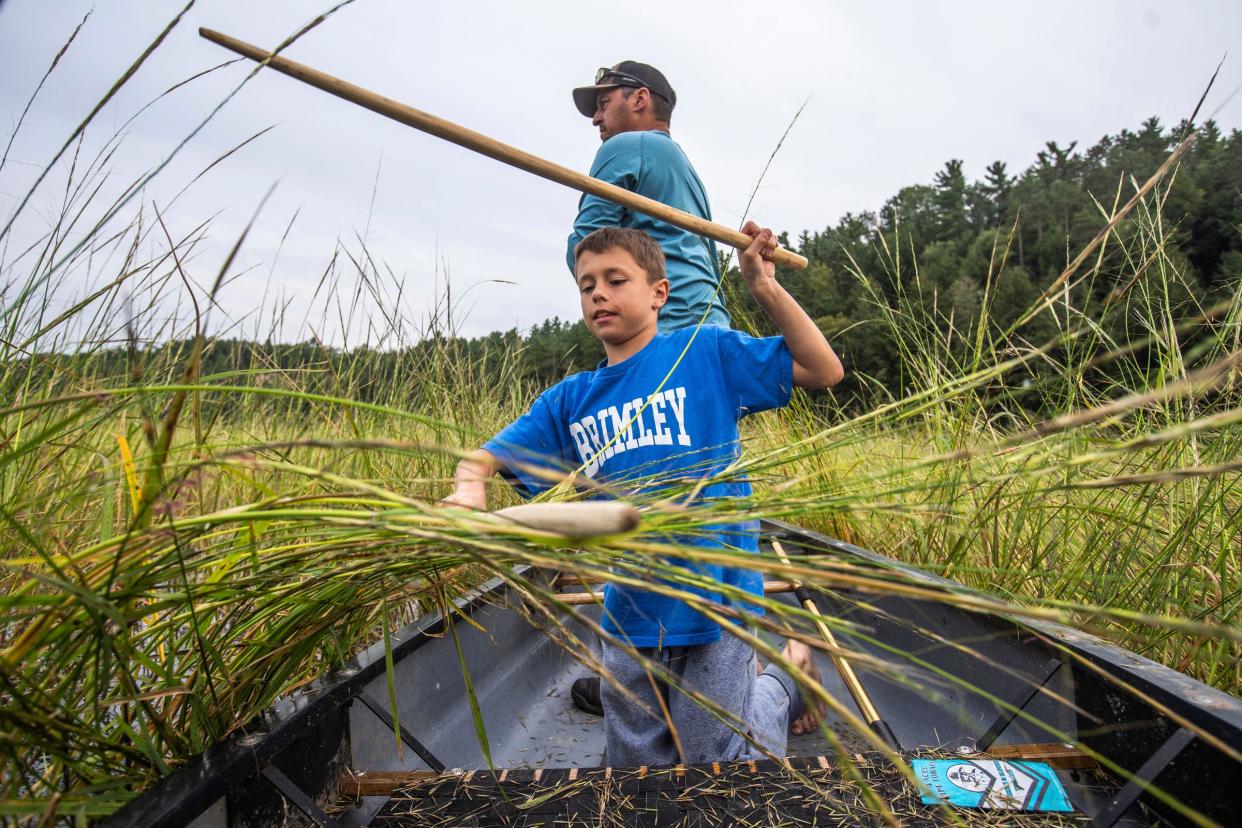
As an eagle circled above a section of the Au Sable River in Oscoda, Bay Mills Indian Community tribal member Dennis Carrick saw the symbolic greeting of the bird, sacred to Native Americans, as a good sign. Carrick, along with Bay Mills Community College livestock educator Dave Corey and his family, had traveled from the Upper Peninsula to harvest manoomin, Michigan's native wild rice. Geese had destroyed the plants in his community's waterway this year. Before navigating his boat along the crystal-clear river, a pair of canoes in tow, he stopped to give an offering of tobacco and say a prayer.
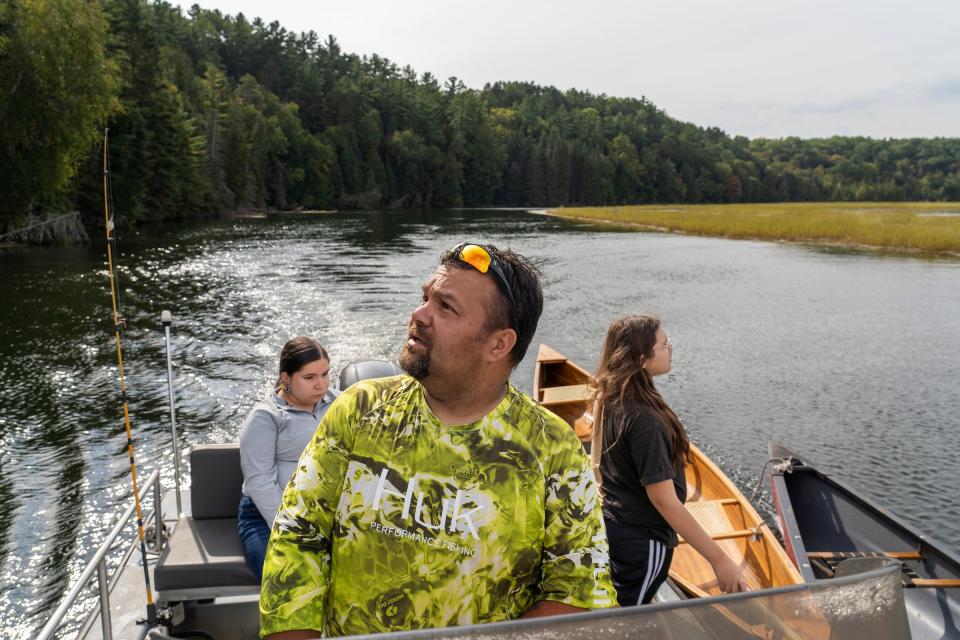
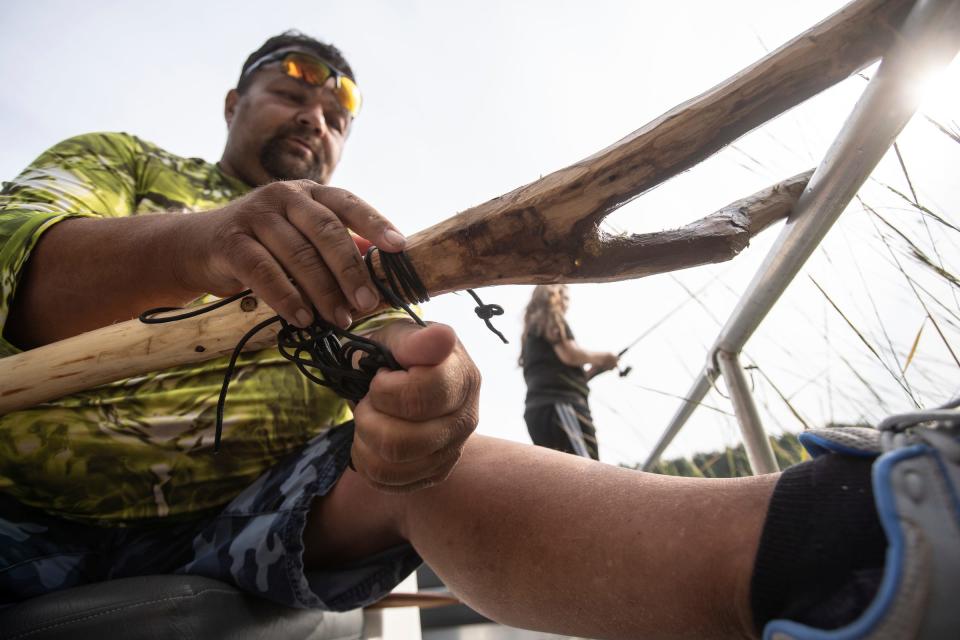
The group looked at the manoomin's tall, grasslike stalks glistening in the sun across the calm water. "Enough talking. It’s time to work," said Carrick, a farm technician at the community college, docking along the shore — after being greeted by another pair of eagles nesting high atop the pine trees surrounding the wild rice.
“It's a pretty sacred food,” said Carrick, who recently started learning, and teaching, how to harvest the grain, one part of bringing back traditional foods through food sovereignty — the right of Native communities to sustainably cultivate traditional foods.
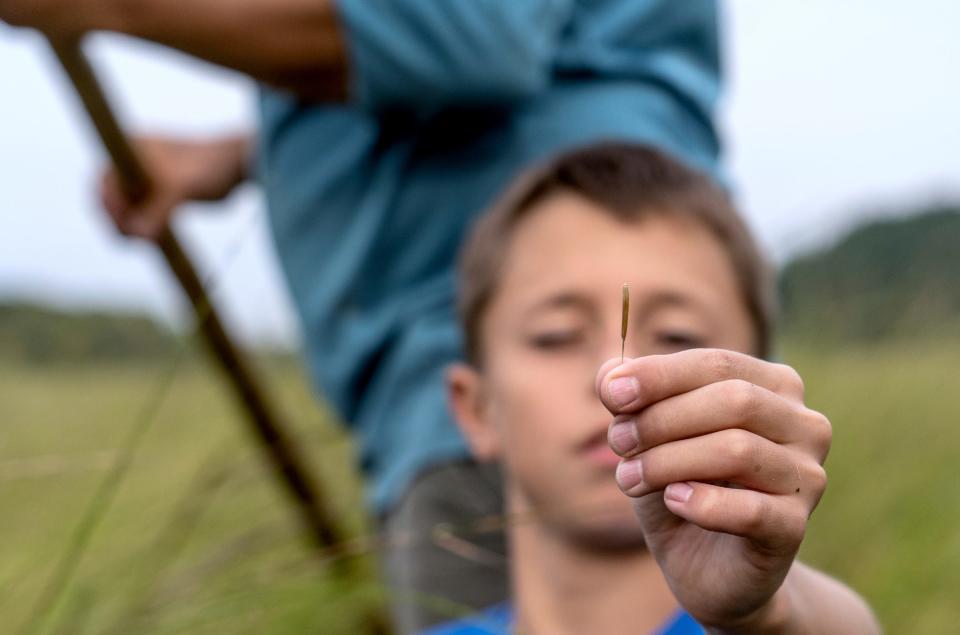
“We — the Ojibwe — the Potawatomi and the Odawa were all one,” said Bay Mills Indian Community tribal historic preservation officer Paula Carrick, Dennis Carrick's aunt. Thousands of years ago, her ancestors lived on the East Coast of North America. “The creator told us to move to where we find the food that grows on water.”
That started the migration to the Great Lakes of Michigan, Wisconsin, Minnesota and Canada, where manoomin grows on slow-flowing inland bodies of fresh water, Paula Carrick explained. "Manoomin" translates in Ojibwe to "the good seed" or "good berry."
“It fed us through the winters. It was life. Even though we were excellent hunters, there wasn't a guarantee you were going to get meat.”
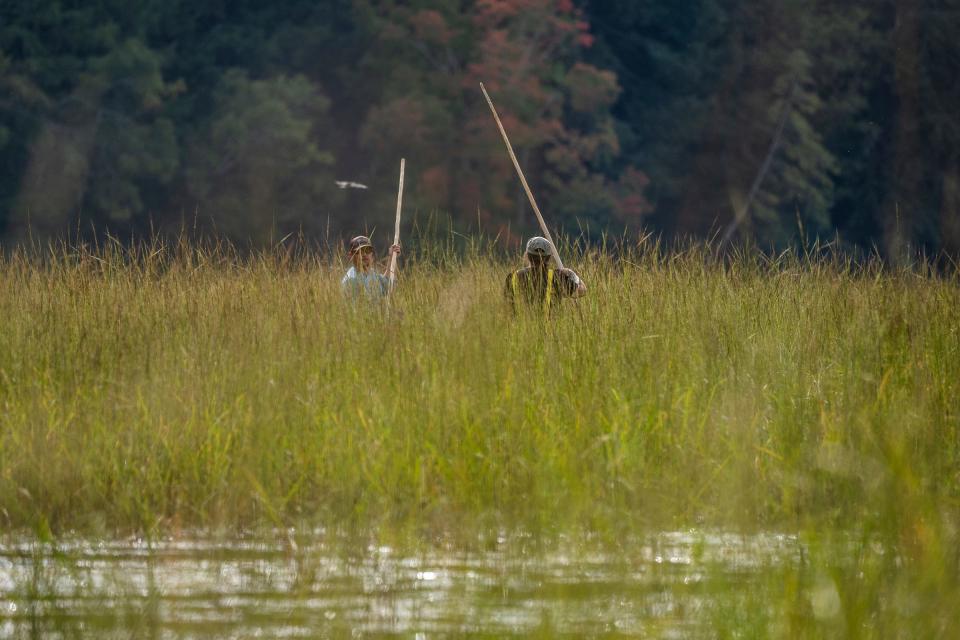
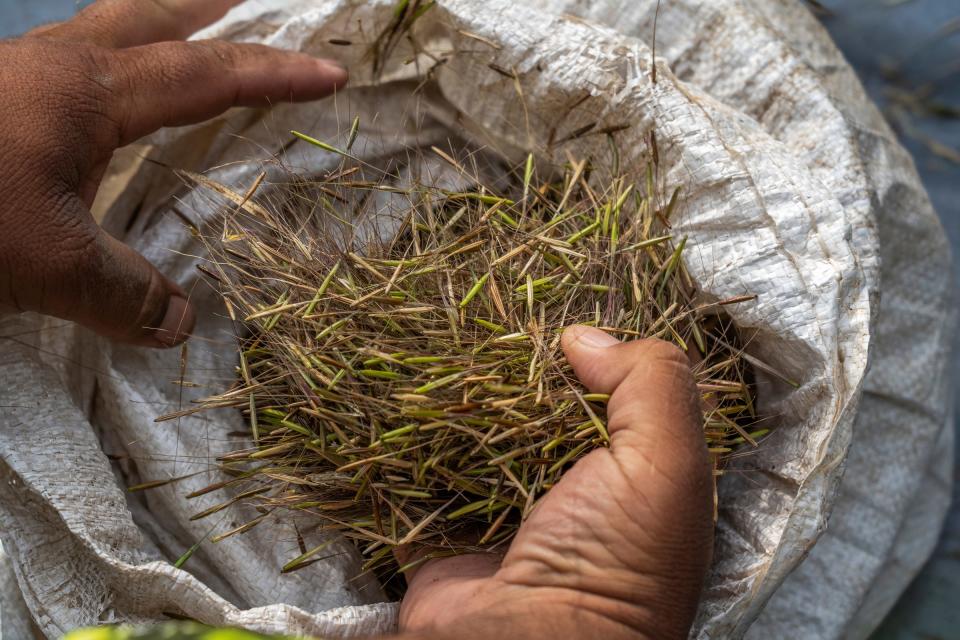
After years of damage caused by logging, development and wildlife have wiped out the vegetation in some parts of the state, there's a growing effort to reintroduce the fragile, native, nutrient-rich wild rice, used for ceremonial offerings and medicinal purposes.
“You're not going to stop the nonnatives from taking boats and ruining it," Paula Carrick said. "They just don't have that connection to it. To them, it's a weed."
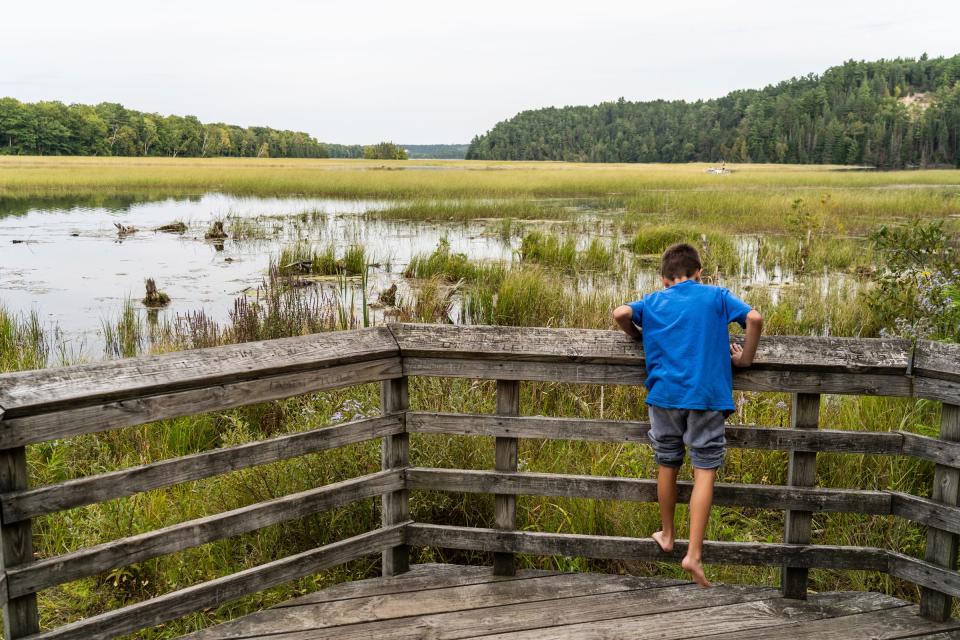
Dennis Carrick is part of the Michigan Wild Rice Initiative team, working to create laws to protect Michigan's manoomin. On Wednesday, the Michigan Legislature designated manoomin Michigan's official native grain. But unlike Minnesota and Wisconsin, Michigan law still doesn't protect the rice from overharvesting.
Back on the river, Dennis Carrick pulls the plants in, using a pair of handmade cedar sticks to gently tap three times to knock the ripe, husk-encased rice into the bottom of the canoe. Corey stands in the stern, using a long, lightweight stick to walk the boat across the water, as shots echo from nearby hunters in canoes. An extra tap from Carrick drops some rice back into the water, planting next year's crop.
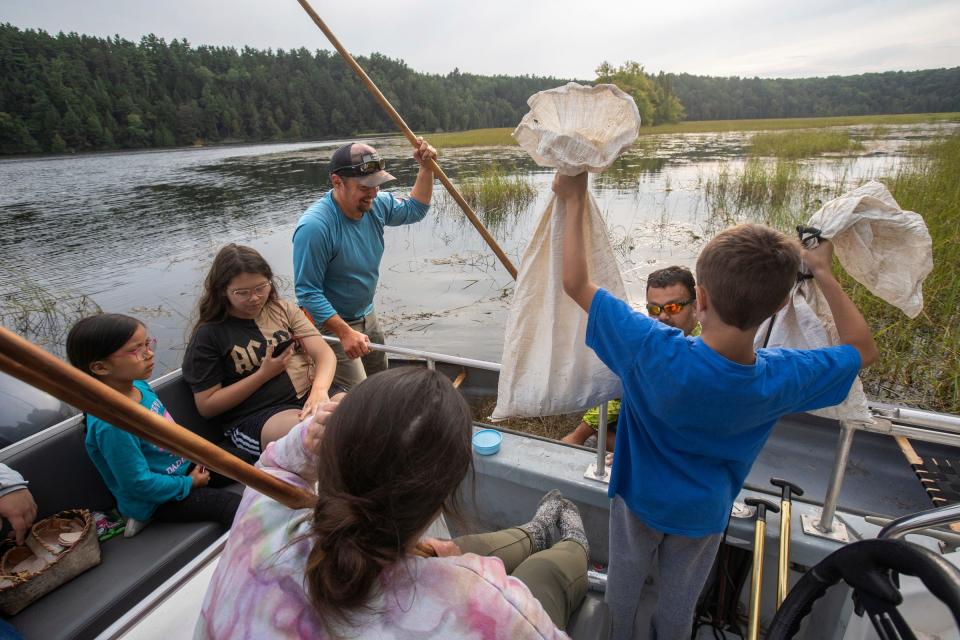
There's a two-week window to harvest manoomin, Corey explained.
“When it's harvest time, you've got to go in, because a thunderstorm could come tomorrow and the next few days it can be over,” said Corey, who harvested for his family, and to pay respect to his ancestors.
Dennis Carrick's father, who worked as a special agent for the federal Bureau of Indian Affairs, specializing in major crimes on tribal land, was often gifted wild rice during his travels to reservations throughout the U.S. “He'd bring home wild rice stories and wild rice as well. We ate a lot of it. So, it's kind of cool to be the one to grow it ... and give it back to him.”
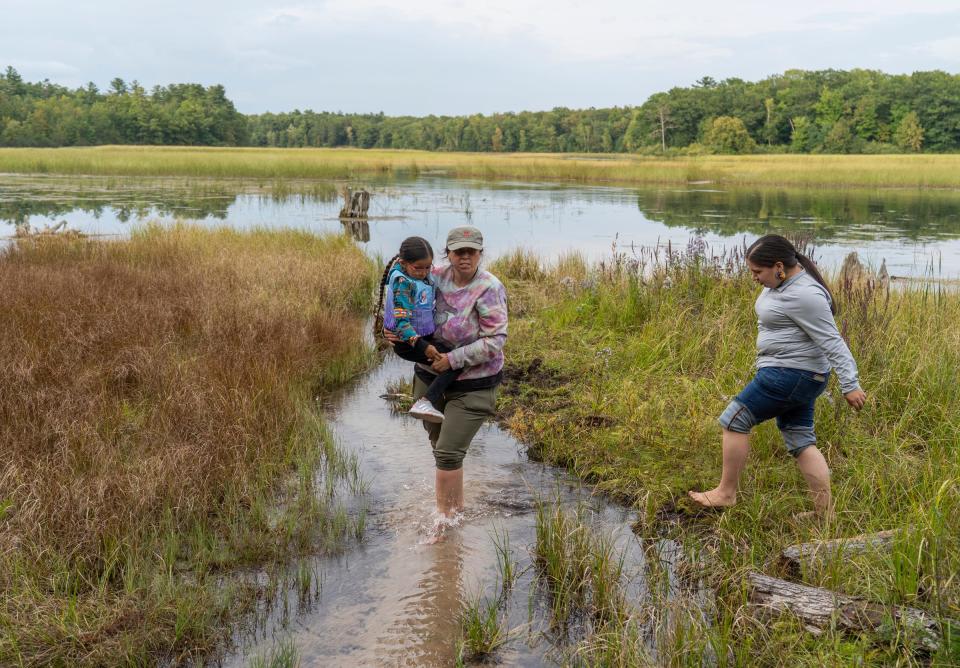
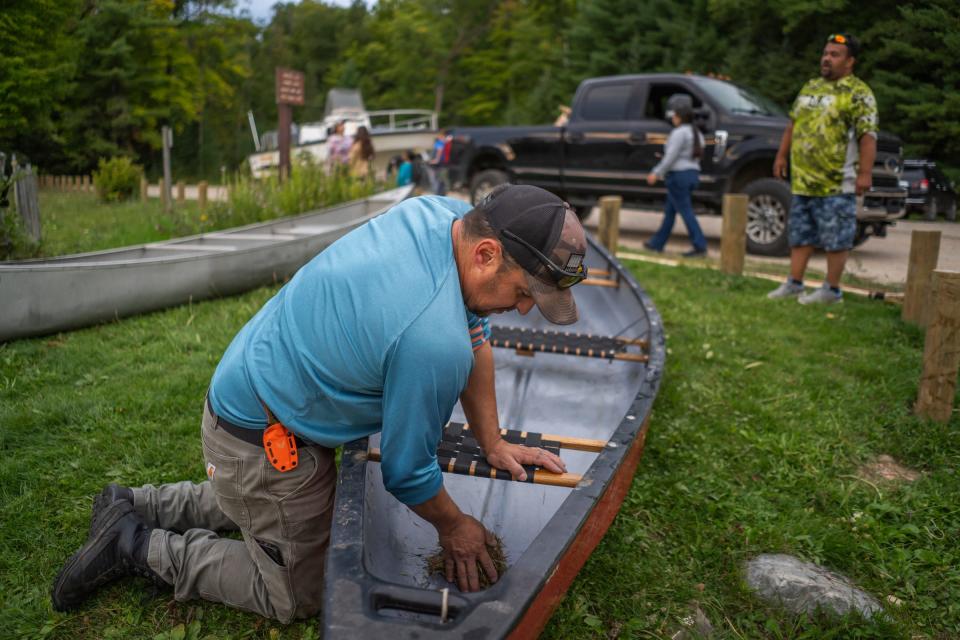
As the sun set on manoomin left to harvest another day, the group returned to shore with burlap bags of wet rice. Some will be used to teach others how to process it before consumption, some will go to the college's head biologist, and some will be replanted, with wild rice bought from Minnesota and Wisconsin, in a restoration project on the reservation.
“I want everybody ... to be able to pass on the tradition that our ancestors had learned,” Dennis Carrick said. “There are generations that ... are now learning it, to be able to pass it on forever.”
This article originally appeared on Detroit Free Press: Manoomin wild rice is Michigan's official native grain

